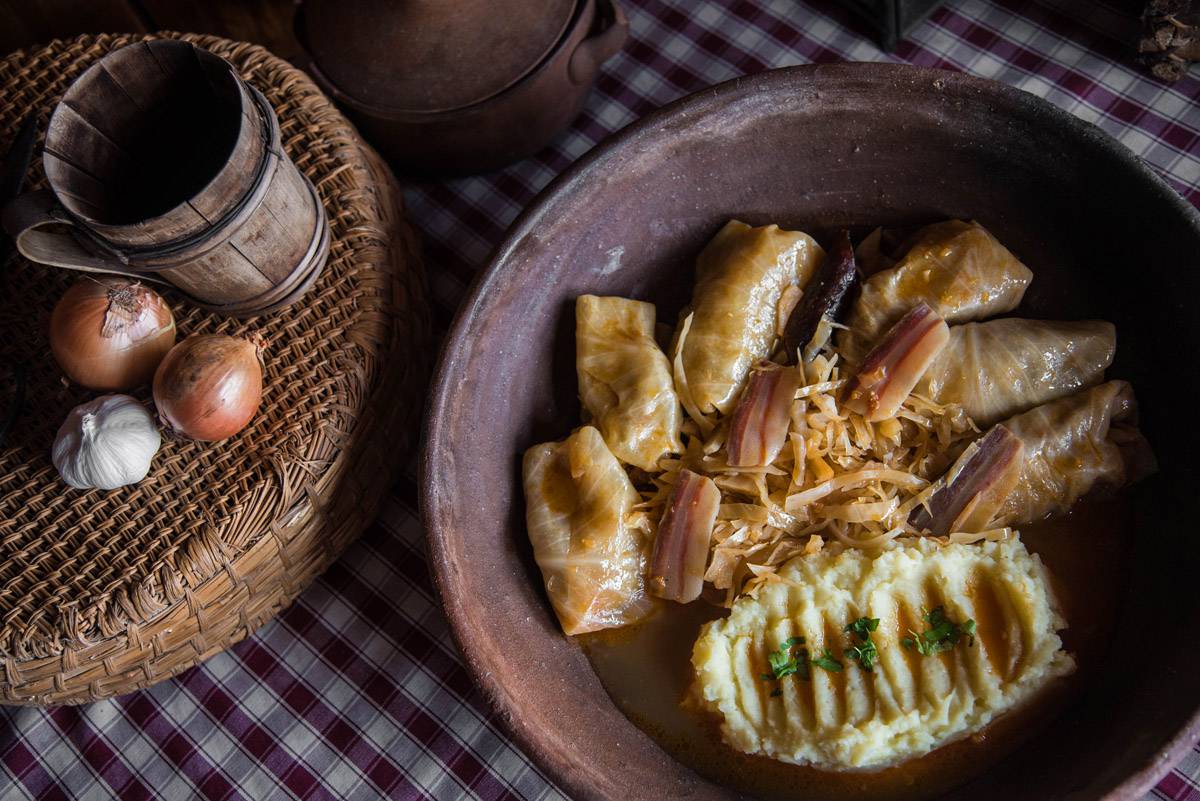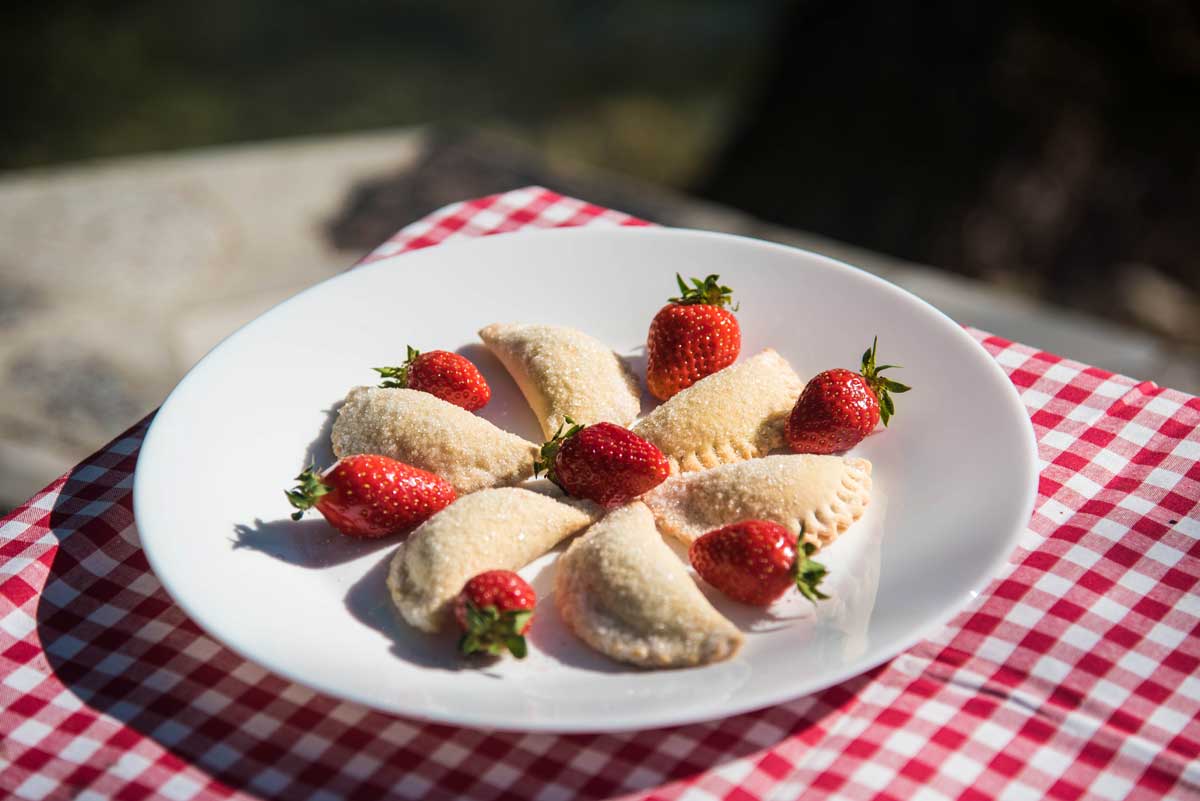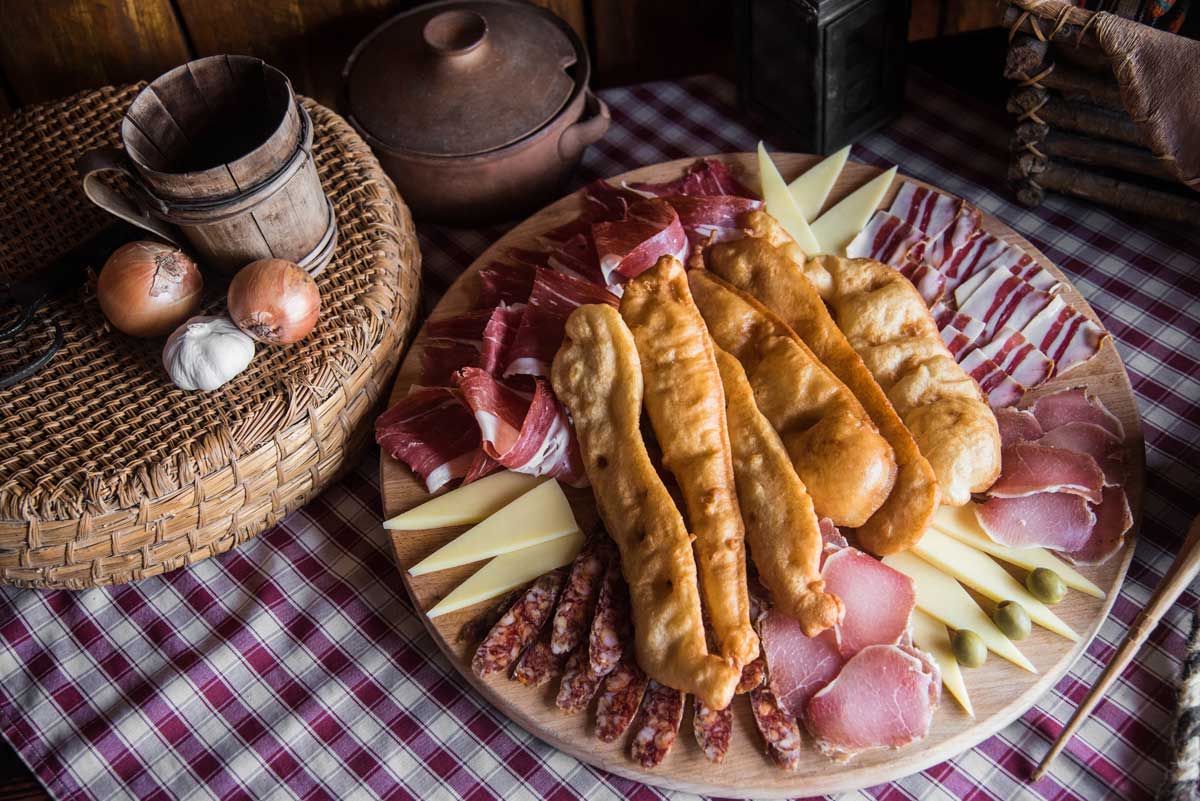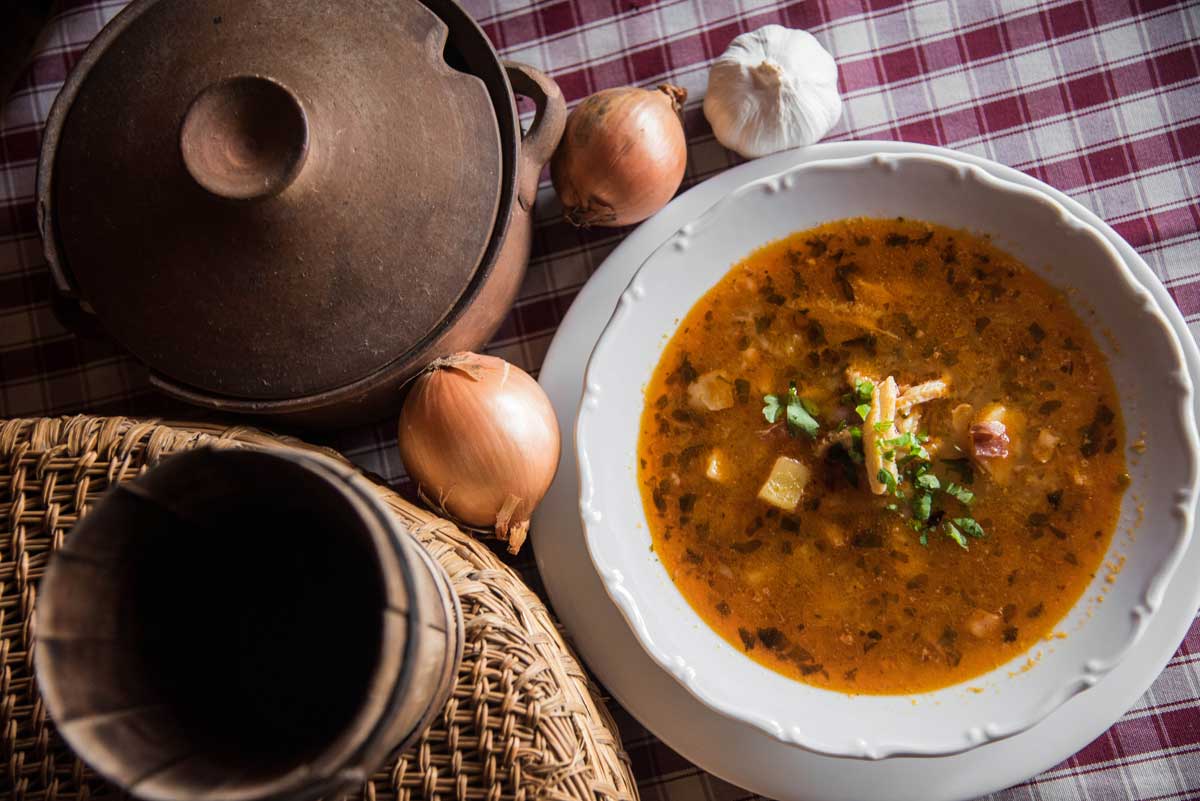Recipes
 Ivana Pavičić
Ivana Pavičić
Arambaši of Sinj
The most famous specialty of Sinj cuisine, recently protected as intangible cultural heritage. The dish’s name is probably derived from Turkish words harami – sinful, unlawful, and başi – head, leader, i. e. harambaša, the leader of the historical hajduci, a group of bandits, and in the Alka Tournament the leader of the Alka squires. The arambaši make one of the most important festive dishes, cooked on the occasion of Easter, Christmas, Assumption, the Alka, etc.
The traditional recipe for the arambaši:
Chop very fine one kilogramme of beef. Make a mixture for roux (pešt) of 2 red onions (kapula), 4-5 cloves of garlic, 15 dag smoked bacon and half the tuft of parsley (petrisimul). Add pepper, salt, nutmeg and the grated peel of a lemon to meat and leave it for an hour. Make the rolls wrapping up the mixture of meat and spices in pickled cabbage leaves. Put a beef bone in the common cooking or earthenware pot (bakra) and cover it with finely cut up pickled cabbage. Add a spoon of tomato purée (konšerva). Then place the rolls, arambaši, in the pot and cover them with cut up pickled cabbage. You can also add a few homemade pork sausages (sudžuk), a piece of prosciutto or smoked beef. Then pour in enough water to cover the arambaši and simmer for 2 hours. Serve the arambaši with smoked and cured meat and mashed potatoes. Prepared in this way, and if kept in a cool place, the arambaši will keep over the following week.
Although the technique of wrapping up stuffing and cooking food in its own juice dates back to Roman times, the practice of stuffing pickled cabbage leaves became widely popular only during the Middle Ages in Carolingian monasteries on the French-German border. Our region became familiar with the practice due to the influence of the Near East, which inherited it from the Byzantine Empire. In addition to pickled cabbage leaves, vine leaves as well as sweet cabbage leaves have been used for the preparation of stuffed rolls. Whereas the East has preferred the sweet variant, pickled cabbage variant has been more popular in our region. Known as sarma in Hungary and Slavonia, where it originated, it extended to the south where there have been many variants, and one of them the arambaši of Sinj.

Ivana Pavičić
Rafioli
Traditional pastries of Sinj, one of the most important festive dishes.
The following ingredients are mixed into a pastry: 50 dag flour, 4 yolks, 12 dag cooking butter, 12 dag sugar, grated lemon peel and vanilla sugar. Roll out the pastry thinly. Then cut it with a glass or mould it into round-shaped pieces. On each piece put a teaspoonful of filling (25 dag roast and minced almonds, 25 dag caster sugar, 2 eggs or whisked 2-4 egg whites, grated lemon peel, juice of a lemon half, a bit of vanilla, maraschino liqueur and a piece of grated chocolate). Smear the edges of the rafioli with the egg white, making sure that they are properly sealed. Then press down gently on the rafioli, put them in an oiled baking dish (tepsija) and bake over middle heat.

Ivana Pavičić
Uštipci
Sift and salt 1 kg of wheat flour, add 2 whole eggs, 2 spoonfuls of sugar and warm water as absorbed by the flour. It is advised to add a bit of grape brandy so that the fat would not be concentrated in the batter when fried. Mix the ingredients hard with a spoon – the batter should be liquid. Put a lot of melted butter in the pan. When it is warmed up, the batter is poured out in the pan. The usual measure for one uštipak is the amount held by a ladle. The uštipci should be long and thin. Dust them with caster sugar while hot.
Kotonjada (Quince Paste)
Ingredients:
- 1 1/4 boiled quinces, ca 3 kg crisp quinces
- 1 kg sugar
- 1/2 litre water
- lemon juice (3 lemons)
Wash, peel and core the quinces. Then chop them and place them in a saucepan. Pour in enough water to cover the quinces and simmer until they are tender. Rub the flesh of the fruit through a fine sieve so that you get a purée. Boil sugar and water until water boils away completely. Then add the quince mixture and cook for around 30 minutes over high heat. While it is cooked, add lemon juice. Oil the moulds or rinse them in cold water. Use water in which you previously cooked the quinces for cooking both jelly and quince peel until the latter is completely tender.Recipe of Mrs Marija Trek
Recipe by Mrs. Marija Trek
Rabbit a la Sinj
Ingredients:
- rabbit
- garlic
- bacon
- a few peppercorns
- a bunch of rosemary
- 2 glasses of oil
- half a glass of red wine vinegar
- half a glass of red wine and red wine vinegar
- 3-4 sugar lumps
Dress (špikovanje) cleaned rabbit meat with garlic and thin-sliced bacon strips. Sprinkle it with salt and place it in a baking dish (tepsija). Pour the oil (1 glass) and red wine vinegar over it and add peppercorns and rosemary.
When rabbit meat is sealed on all sides, cut it up finely and place it in a saucepan. Pour the oil and strained gravy over it. Pour also around it half a glass of red wine and red wine vinegar. Add also 3-4 sugar lumps, shake the saucepan, cover it and let simmer until thickened.
Dalmatinska kuhinja (Dalmatian Cookery Book), Dika Marjanović-Radica

Ivana Pavičić
Šiša (Lamb Tripe)
Ingredients:
- lamb tripe
- 2 spoonfuls lard
- a bit of onion
- 2 carrots
- pepper and salt
- 25 dag French beans or peas
- a bit of sataraš (vegetable dish)
- roux (browned mixture of fat and flour)
- soup-stock
- 25 dag homemade noodles
Clean and rinse lamb tripe and let it boil briefly. Heat the lard in a saucepan, add chopped onion and fry until tender (užutiti). Add cut up tripe and fry it to a golden brown in the lard (da se užute). Then add two carrots, pepper and 25 dag chopped French beans (peas). Stir in a bit of roux and soup-stock. When the mixture is well cooked, add 25 dag homemade noodles and let simmer until completely tender.










